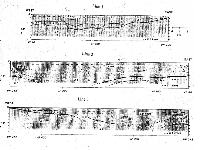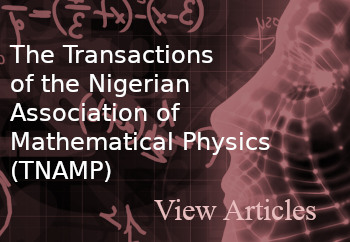STRUCTURAL INTERPRETATION USING REFRACTION VELOCITIES FROM SEISMIC SURVEYS.
DOI:
https://doi.org/10.60787/jnamp-v66-311Keywords:
Reflection, Refraction, Waves, Wave propagation, Velocity modelAbstract
A compressional wave velocity model is presented for the upper few kilometers of Thomson in McDuffie county, Georgia. The velocities were determined from refractions, that is first arrivals, on individual seismic reflection records. The refractions are clear, and it is possible to define the gross structure in addition to the predominant velocity layers of 2.8, 3.7, 4.5 and 6.1 km/s. The observed velocity model implies pronounced variations in thickness of the tertiary, Mesozoic and Paleozoic strata and extreme structural relief of the crystalline basement. The most conspicuous feature shown by the velocity data is a horst, an intrarift uplift of the Precambrian basement.
Downloads
References
Sanford, A. R, (1977). Geophysical evidence of a magma body in the crust in the vicinity of southern Georgia. American Geophysical Union Geophysical Monograph 20. p385-404
Osagie, E. O. (2005). The effect of a dipping on a seismic reflected signal. Pacific Journal Science and Technology 12(22), p523-527
Dobrin, M. B. (1976). Introduction to geophysical prospecting. New York. McGrew Hill p252-338.
McGinnis, L. D. and Otis, R. M. (1979). Compressional velocities from multichannel refraction arrivals on Georges Bank, northeast Atlantic Ocean. Geophysics. 44, p 1022 - 1033
Grant, F. S. and West, G. F. (1965). Interpretation theory in applied geophysics. McGrew Hill Book Co. New York.

Published
Issue
Section
License
Copyright (c) 2024 The Journals of the Nigerian Association of Mathematical Physics

This work is licensed under a Creative Commons Attribution-NonCommercial-ShareAlike 4.0 International License.




